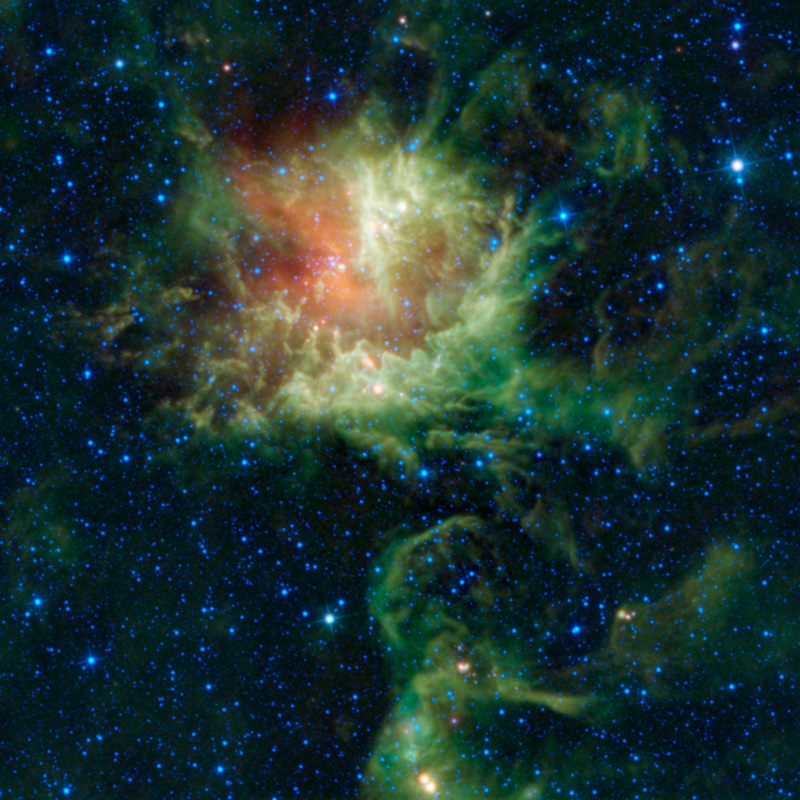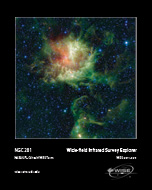|
 |


October 27, 2011 - Does ‘Pacman’ have Teeth?
In visible light, the star-forming cloud catalogued as NGC 281 in the constellation of Cassiopeia appears to be chomping through the cosmos, earning it the nickname the “Pacman” nebula after the famous Pac-Man video game of the 1980s. However, the Wide-field Infrared Survey Explorer, or WISE, observed the nebula in infrared light revealing a different view.
NGC 281 is a giant cloud of dust and gas located about 9,200 light-years away within our own Milky Way Galaxy, and spans about 130 light-years in space. Inside the cloud, a new cluster of stars is forming. This young cluster, called IC 1590, appears as a group of stars near the center of the red and green cloud in the upper portion of the image. Within the cluster there are several very massive stars, many times the mass of the Sun. These stars are also very hot and produce large amounts of ultraviolet radiation and blow strong winds. The radiation and winds erode the larger cloud from the inside out, giving it a shell-like appearance. The winds and radiation also heat the dust in the cloud, which then glows in infrared light. The wavelengths at which the dust glows depends on the temperatures.
The process of the erosion of the nebula by the young star cluster is thought to trigger additional formation of stars. Around the edges of NGC 281 are many long columns pointing toward the central star cluster, giving the appearance of the Pacman with teeth. These are parts of the cloud that are a bit more dense, and hence erode more slowly than the rest of the cloud. At the tips of these columns, the material may be compressed enough to set off the formation of new stars. Also, sprinkled around the images are several star-like objects that appear very red. These are likely baby stars in the early stages of formation. They are wrapped in cocoons of dust, which glow strongly in the longer wavelengths, giving them their red color in this image.
This image was made from observations by all four infrared detectors aboard WISE. Blue and cyan (blue-green) represent infrared light at wavelengths of 3.4 and 4.6 microns, which is primarily from stars, the hottest objects pictured. Green and red represent light at 12 and 22 microns, which is primarily from warm dust (with the green dust being warmer than the red dust).
Image Credit: NASA/JPL-Caltech/WISE Team
|
|





